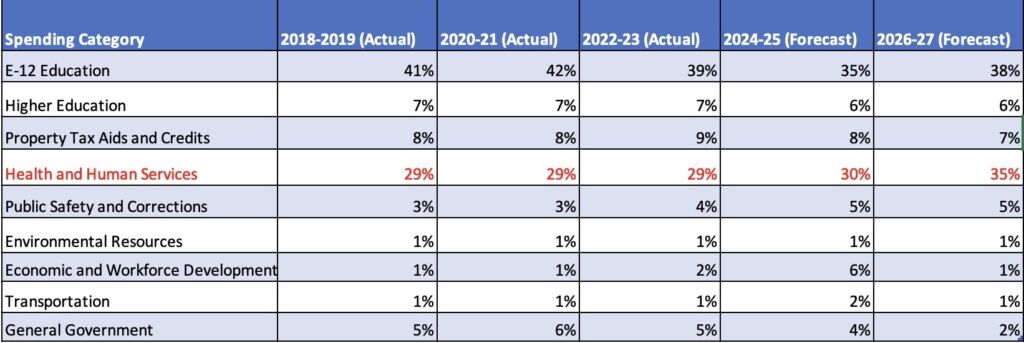We need to talk about Minnesota’s growing welfare system
“Minnesota Nice” may not hold across the board, but when it comes to welfare, it’s right on the money.
By any metric, Minnesota has always had a vast and generous welfare system compared to most states. But after the record amount of money that lawmakers dedicated to Health and Human Services (HHS) in the “historic” 2023 legislative session, this is going to cause problems.
Generally, outside of K-12 education, nothing else in the state budget costs the state as much as welfare. In the 2022-2023 biennium, for instance, nearly 30 percent of the state budget went to HHS. Health and Human Services was the second biggest expenditure, only behind K-12 education. HHS also cost the state more than triple what it spent on tax credits, the state’s third biggest spending category. HHS was the biggest expenditure, taking nearly half of all spending if we include money coming from the federal government.
In the last session, however, lawmakers ramped up welfare spending to an unprecedented level. HHS is now expected to consume over a third of the state budget in the 2026-27 biennium.
Table 1: Actual and Projected General Fund Spending by Category, FY 2018-FY 2027

In nominal dollar terms, Minnesota Management and Budget (MMB) estimates show that HHS will grow from $15 billion in the 2022-23 biennium to $21 billion in the 2024-25 biennium, and then reach nearly $23 billion in the 2026-27 biennium.
Put another way, in the four years covering the 2024 to 2027 fiscal years, Minnesota will allocate $42 of every $100 in new spending to HHS, making it the primary driver of growth within the state budget.
Figure 1: Actual and projected HHS General Fund Spending, FY 2023-FY 2027

Minnesota’s welfare system has indeed undergone a “historic” expansion.
But should we celebrate?
This is a question at the heart of the American Experiment’s most recently published report.
Minnesota’s social safety net certainly serves an important purpose. Our state, much like every other state, has people, who as President Ronald Reagan described, “through no fault of their own, must depend on the rest of us.” These include the disabled and the elderly. Hardworking families and individuals can also fall on hard times and need help getting back up.
But while a social safety net is important, the recent expansion of Minnesota’s welfare system is likely going to cause some problems. As I outlined in the report, Minnesota has always been a high-tax high-spending state and has had one of the most generous welfare systems in the country. New spending is likely, therefore, only going to put pressure on the budget, taxpayers, and the rest of the economy.
Series Breakdown
This blog series is a breakdown of our new report, starting first with what happened in the 2023 legislative session and where the new money is going. Later posts break down how Minnesota’s current and past spending on welfare compares with other states, outlining why new spending wasn’t necessary. The series concludes with what’s possibly going to follow from this new spending.
part 1: What happened in the 2023 legislative session
Part 2: Welfare spending as a share of the budget
Part 3: Welfare spending per person in poverty
Part 4: Welfare spending by program — Medicaid
Part 5: Welfare spending by program — Cash Assistance
Part 6: Welfare spending by program — Childcare
Part 5: How welfare spending has grown
Part 7: Causes for concern